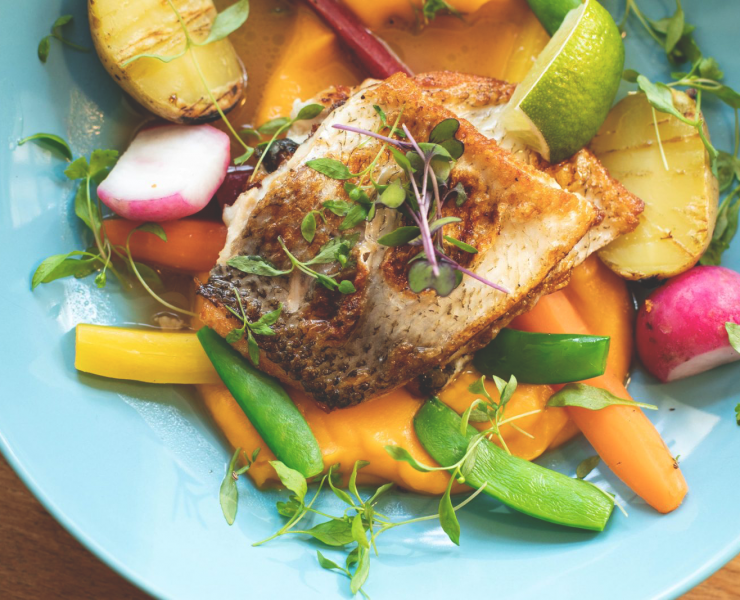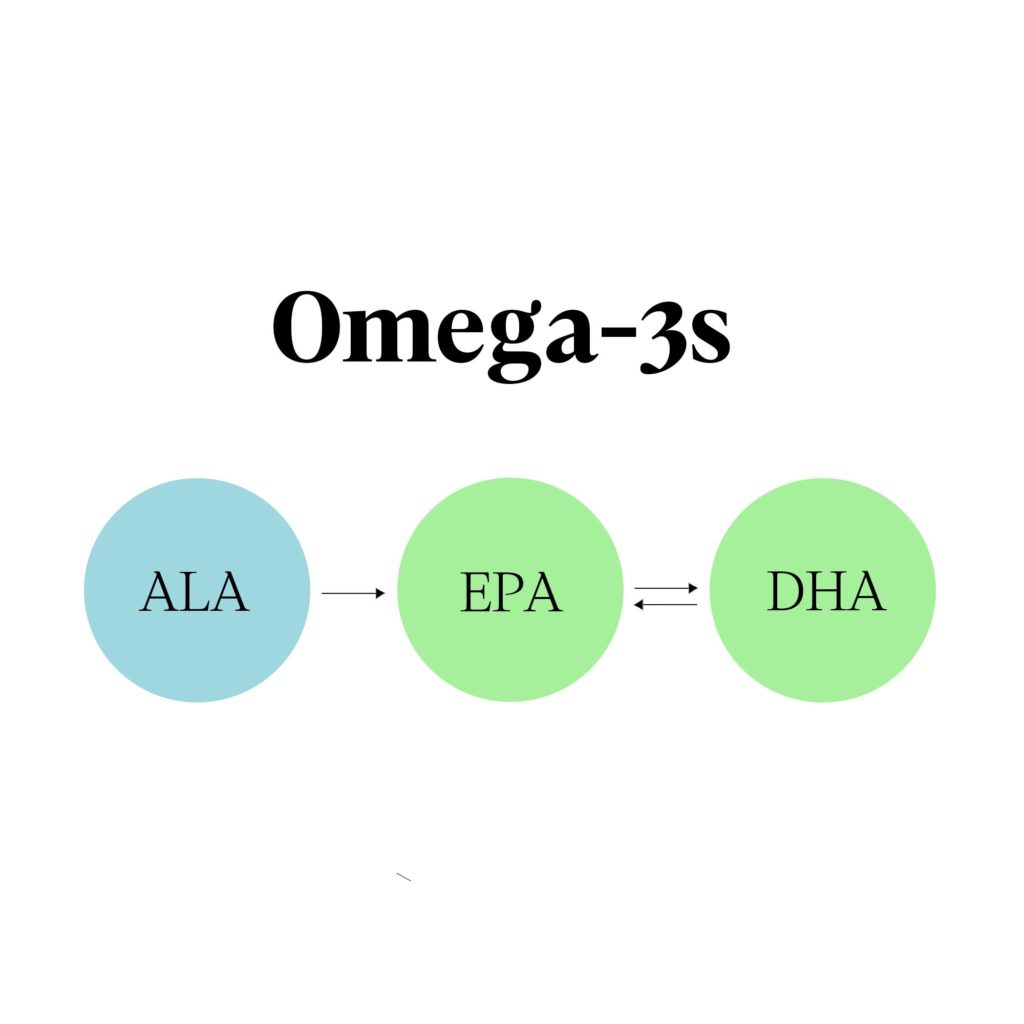
In my opinion, omega-3s are the OG of fats. Not only are they probably the best fat for fertility but they have other health benefits too.
Omega-3s: The Best Fat for Fertility
What are Omega-3 Fatty Acids?
Omega-3s are a group unsaturated fats, with the main Omega 3’s in our diets being ALA, EPA and DHA. ALA is found in plant sources like soybeans, walnut and some seed/vegetable oils. But DHA and EPA are only found in significant amounts in fish and seafood (or fortified food.) They often referred to as the marine omega-3s.
Our body can convert some ALA to EPA and DHA (about 10%) but it’s not particularly good at it. We can’t get enough DHA and EPA from ALA conversion alone so if you don’t consume fish, seafood or fortified food regularly you’ll need to supplement with fish or algae-based DHA and EPA.
In general, marine omega-3s are important for our brains and eyes. Their anti-inflammatory qualities mean they likely have benefits in preventing chronic disease and they are known to decrease insulin resistance.

So Why is Omega-3 the Best Fat for Fertility?
Many studies have suggested benefits of a high marine omega-3 intake in the preconception period. Let’s look at the food studies first:
A study looking at 500 couples researchers found that when both partners consumed eight or more seafood servings per cycle (approximately two serves per week) they had a 61% greater chance of conceiving!
Another study showed that embryo quality was improved in women with higher fish intake.
Animal studies also support the idea that omega-3 is the best fat for fertility. One mouse study found that a lifelong diet rich in omega-3 fatty acids actually prolongs reproductive function into advanced maternal age. The same researchers also noted that with a short-term diet rich in omega-3 fatty acids, they could improve egg quality when age-related decline was expected. This is really exciting as age is one of the many reasons for decreased fertility, hopefully, some studies in humans look at this soon.
In another study, female sheep treated with fish oil had more follicles and egg plus, the eggs were better quality.
While most studies supported the benefits of omega-3’s, one mouse study did find that high levels of omega-3 supplements were associated with poor embryo morphology and less development to the blastocyst stage.
Is Omega-3 the Best Fat for Fertility in Humans Too?
Well, one study on regularly menstruating women found that DHA was associated with increased progesterone and a reduced risk of anovulation. Another high-quality study support this finding in overweight/obese women with PCOS. It found that omega-3 supplementation increased regular menstruation significantly more than a placebo. They also found the supplementation lead to significantly lower levels of testosterone (which is important in PCOS).
A recent study looked at two online cohorts, one in North America and one in Denmark, of women not undergoing fertility treatments. They found that using fish oil supplements was associated with an increased chance of conceiving in one group and low omega-3 intake was associated with reduced chance of conceiving in the other.
So What About for Assisted Reproduction?
One prospective study in IVF study found positive associations between ALA and DHA intake and improved embryo morphology. However, another study found no association.
A high-quality study in ICSI found that supplementation increased the fertilization rates in women with a history of fertilization failure. Clinical pregnancy rate per cycle were also higher but not significantly so.
An important recent study looking at outcomes found that higher levels of DHA and EPA were associated with increased clinical pregnancy and live birth rates. The authors suggested that the chance of live birth increased by 8% for every 1% increase in omega-3. It’s great to see studies looking at live birth rates as what we’re all really after here is a baby to take home after all!
However, it seems that not all omega-3 fats are created equal. This is where the difference between plant-based and marine omega-3s comes into play. The research shows that too much ALA may be harmful to fertility. One study showed high intake was related to high oestrogen and we know that too much oestrogen may prevent implantation. Another two studies (here and here) found that higher levels of ALA were associated with a lower chance of pregnancy, although these results were not significant in the second study.
Overall, the evidence from seafood studies in humans and both animal and human studies looking at omega-3 intake, supplements or blood levels paint a pretty convincing picture:
Marine omega-3s, that is DHA and EPA, are really important for fertility. Compared to other types of fat, they are clearly the best fat for fertility.
So as well as making sure you’re not having too much or too little fat, make sure you’re getting in two to three serves of oily fish per week for your DHA and EPA. If you don’t eat fish, speak with a dietitian about starting supplements.
back to top
Foodbaby WAS FOUNDED on Kulin Nation land. We acknowledge the Wurundjeri people, Indigenous Australians, who are the Traditional Custodians of this land. We pay our respects to all Aboriginal and Torres Strait Islander Peoples and their Elders past, present and emerging.
Fertility dietitian, cycles nerd, lover of food and squishy newborn baby cuddles. I help people get pregnant (fast) and have the healthiest pregnancies possible.
Hey, I'm Ami
@foodbabyfertility